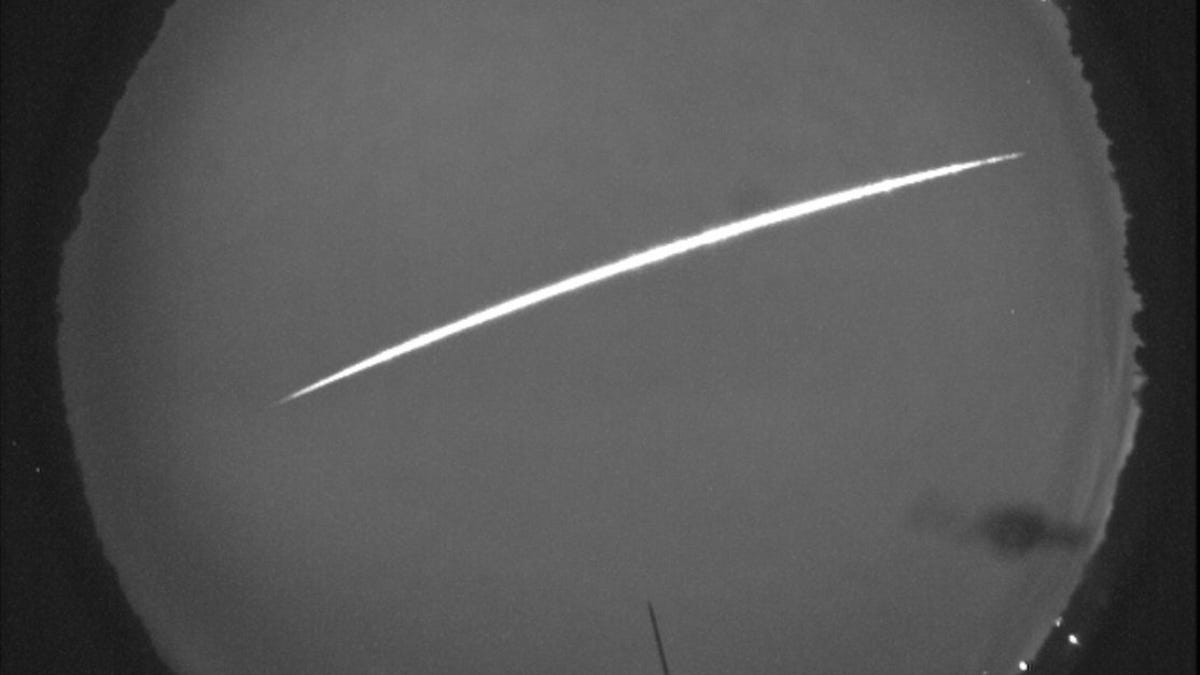Orionid Meteor Shower 2022 Peaks Tonight: How to See It
Tonight and Friday morning could be among the better opportunities to catch shooting stars this year.

Fireballs are a possibility this time of year.
One of the year's iconic meteor showers reaches its period of maximum activity in the next 24 hours and is best seen after about 10 p.m. local time.
Whenever the famed Halley's Comet makes a trip through the inner solar system every 75 years or so, it leaves behind clouds of dust and cosmic detritus. And each year around this time, our planet floats through some of those clouds, producing what we know as the Orionid meteor shower.
As the bits of comet crumbs collide with our atmosphere, they burn up in a fleeting instant, producing the short trains across the sky we call shooting stars. Larger or slower-moving bits can flame out as bigger, brighter fireballs.
The 2022 Orionids are set to peak Thursday evening and into the following morning. The American Meteor Society predicts that sky watchers with ideal conditions could catch between 15 and 20 meteors per hour. Sometimes the shower surprises with outbursts that triple that figure.
"The best time to see these meteors is from 1 a.m. to dawn (local time)," explains Bob Lunsford of the American Meteor Society in a blog post for AMS. "At the time of maximum activity the source of these meteors lies just east of the faint club of Orion. This position also lies about 10 degrees northeast of the bright orange star known as Betelgeuse (alpha Orionis). 10 degrees is equal to one's fist with your arm held straight out."
If you head out to look for Orionids, you can try to follow Lunsford's tips, or take a shortcut by locating Orion using an app like Stellarium. Putting the constellation in the center of your field of view will help maximize the experience, but anyone with a decently broad vantage point of the night sky will have a good chance of catching the shooting stars.
This is an above average year for spotting Orionids on peak night based on the moon being a fairly dim crescent on the other side of the sky from Orion. This means it won't wash out as many faint meteors. But you can always maximize your situation by putting the slight moon at your back or as far away from the center of your gaze as possible.
As a bonus, the Orionids aren't the only meteor shower active this week. The long-lasting Taurids and a handful of minor meteor showers could also contribute several more meteors per hour to the show. The Taurids are distinctively slower moving, which means they can generate more bright fireballs.
All this adds up to one of the top nights of the year to take in a little fire in the sky. The only factor that can't really be controlled or accounted for is cloud cover at your location.
If the weather cooperates, take advantage by getting as far from light pollution as possible to a location with a wide view of the sky and where you can lie back on a lounge chair or blanket. Give yourself at least an hour for the viewing experience, including time for your eyes to adjust to the dark. Be sure to bring what you need to stay warm and some snacks to keep you from being tempted to run inside. Then just relax and watch the show.

